Greetings, friends. I’m in Central Oregon this week for a little personal retreat. I need cold night air, a crackling fire, and some blessed silence.
Today I awoke to a frost-world: white-tipped pine needles standing absolutely still in the grasp of a frigid morning’s embrace. Not exactly frozen, no snow yet, but everything is donning the crisp, royal coat of winter.
It’s cold, and I love it. My northern blood understands this implicitly.
This is the first of several posts this month where I’m going to share about some of the books that have made a powerful impact on my own life and thinking.
These books also played a powerful role in laying the foundations for my own book, Psychedelics and the Soul: A Mythic Guide to Psychedelic Healing, Depth Psychology, and Cultural Repair.
All of them are full of stories, perspectives, and insights that profoundly reshaped the ways I see the world. They are listed in no particular order, and all of them are worth your time.
Also, this post can serve as a holiday gift guide, if you’re into that sort of thing. Maybe you’re looking for a perfect book for that special someone. Maybe you want something for yourself. Either way, for anyone interested in mythology, depth psychology, animism, and Indigenous traditions, these books are guaranteed to hit the mark.
Re-visioning Psychology, by James Hillman
There are few books that so completely upend our modern materialist understanding of psychology like James Hillman’s magnum opus. This book is at once a takedown of the sterilized form of psychology as we now understand it, as well as an impassioned manifesto for an animistic, or “personified” way of relating with the world and the psyche, as Hillman would say.
Re-visioning Psychology is a clarion call, an alarm bell, and an enchanting Otherworldly melody all at once. It’s rare to come across a book this brave these days, a book that is this willing to fly in the face of long-held philosophical concepts and psychological perceptions that actually deny the soul, bringing us further away from an ensouled way of being, a legacy that goes back centuries, and might actually point towards the root of many of our modern problems.
This is a dense book, but it’s filled with lines that pack a punch. For instance: “What is needed,” wrote Hillman, “is a revisioning, a fundamental shift of perspective out of that soulless predicament we call modern consciousness.” And that is just page 3.
Hillman’s Re- visioning was a central text during my time at Pacifica Graduate Institute, and has stayed with me ever since.
Its concepts inform the foundation of what we’ll be learning in my upcoming 6-week course on Mythopoetic Integration, where we’ll learn to amplify and “personify” the images and beings that emerge during altered states of consciousness.
We have over 30 people signed up so far, and registration is still open!
The Spell of the Sensuous, by David Abram
Some books get into your clothes like that wild, musky scent of campfire that never leaves. The Spell of the Sensuous is such a book. I first read it in the Peruvian Amazon while immersed in a Shipibo plant dieta - perhaps the perfect circumstance to dive into this text which re-animates the notion of animism itself.
Written in the early 1990’s, this book is something of a cult classic in mythopoetic and ecological circles. Beginning with Abram’s explorations into magical and shamanic traditions across the world, the book takes a hard turn into the labyrinth of phenomenology, perception, language, and sensation. Abram attempts to articulate the complexities of Indigenous worldviews and perception in a way that makes them much more digestible for modern minds used to the written word which have forgotten the fundamental roles that speech and sensation plays in human culture.
My thinking changed forever after encountering the work of David Abram.
The Sacred and the Profane, by Mircea Eliade
Mircea Eliade is like Joseph Campbell for big kids. Considered one of the most pivotal scholars in the entire field of comparative religion, Eliade’s work has been a foundation for my own studies since encountering him as an undergraduate student studying anthropology and religion.
The Sacred and the Profane was the first work of its kind to discuss in detail the notions of sacred space and time as it is represented across human cultures. Eliade is known for drawing upon hundreds of cross-cultural examples sourced from anthropology and mythology. His work is high-level nerdery at its best, and I am completely here for it.
The Sacred and the Profane serves as the foundational text for Chapter 2 of my book, which focuses on the ideas of set and setting in psychedelic containers. But when these ideas are filtered through Eliade’s understanding, we can begin to see that the idea of sacred space and time goes far beyond simply lighting a few candles, and instead speaks directly to what Jung called the “religious function of the psyche.”
A Branch from the Lightning Tree: Ecstatic Myth and the Grace of Wildness, by Martin Shaw
I discovered Martin Shaw when I was at the bottom of the dark tunnel that is graduate school. I could not bring myself to read any more of the required texts that are a necessary evil in most licensure-based counseling programs. I found myself adrift, far from any passion around the work, completely losing sight of what brought me to study psychology in the first place.
Then, I stumbled across the rough language of this Druidic bear of a man. I know a lot of people have this experience with Martin’s work, but it was as if his words were waking something up in me that the drudgery of modern life, let alone grad school, had all but eclipsed.
A Branch from the Lightning Tree is Martin’s first book, and the one I return to again and again. Growing out of his 4 years living in a black tent across the Devonian countryside, it is a world-class mythopoetic exploration of initiation, culture, and that enigmatic presence we call the wild.
This book, like much of Martin’s work, informed the foundations of my masters thesis, and is peppered throughout my own book. Though he truly shines as an oral storyteller, I can’t recommend this book enough.
Descent to the Goddess: A Way of Initiation for Women, by Sylvia Brinton Perera
Yet another treasured text from my grad school studies, this book is a full-power dive into the Sumerian myth of Inanna and her descent to the underworld, as seen through a feminist and Jungian lens. Chapter 3 of my book focuses exclusively on this myth, and is a particularly special one to me because it was the first chapter I wrote.
Exploring this myth gave me permission to let my mind run wild. Words just poured out of me when I began exploring this story, and 16,000 words later I realized that maybe I could in fact write a whole book. In a way, if it wasn’t for this book, and this story, my book would likely not exist.
Perera was a very well-regarded Junginan analyst, and her exploration of the Inanna myth is one of the best examples of a mythopoetic deep dive I’ve ever seen. Every single page is imbued with wisdom. For anyone who wants to dive deeper into Inanna and her archetypal descent and rebirth, this is the book.
Thirty Two Words for Field: Lost Words of the Irish Landscape, by Manchán Magan
Still largely unknown out of niche circles here in the US, Machán Magan is honestly one of Ireland’s living treasures, though I am sure he’d cringe at me saying it. I met Manchán in Portland while he was touring his spellbinding live show, Arán and Im.
He was even kind enough to read and edit the first chapter of my book, which focuses on two ancient Irish myths - an honor disguised as kindness.
Thirty Two Words for Field is a book unlike any other. In it, Manchán deftly weaves the Irish language through folklore, ecology, agriculture, community, and even philosophy. Machán reveals that it is a people’s language that contains their entire perception of reality, and shows how the Irish language beautifully articulates an Indigenous Celtic worldview that sees this reality as just one of many.
This book is essential reading for anyone interested in Irish or Celtic culture, guided by a true master of his craft.
(Also, Manchán just released a new book, Brehons and Brahmins: Resonances between Irish and Indian cultures, which delves deep into the far distant past, tracing the connection between Sanskrit and vedic mythology to Irish lore and language.)
To be continued…
Registration for my new 6-week course, Psychedelics and the Soul: Level 1 - Mythopoetic Integration is now open!
You’re invited to join a vibrant community of psychedelic practitioners and inner explorers to learn about the world of symbolism, dreams, and altered states of consciousness. In this 6-week course, I’ll walk you through the “Mythopoetic Integration Method,” a way of working with visionary and psychedelic experiences that draws upon the traditions of Jungian depth psychology, archetypal psychology, dreamwork, and animistic perspectives.
Course begins January 28th.
Also, you’re invited to come to my monthly Mythopoetic Integration Circle, which is available for all paid subscribers. This monthly group call is an opportunity to see this method in action, and to engage in the type of collective, inner work that we’ll be doing on a more in-depth level in the course. It’s only $8 a month, plus you’ll get access to my full archive and audio essays.
Let me know if you have read some of these books and how they impacted you!
And as always, please like and share this post to your heart’s content.





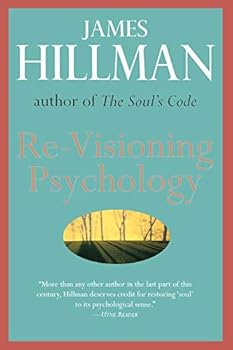
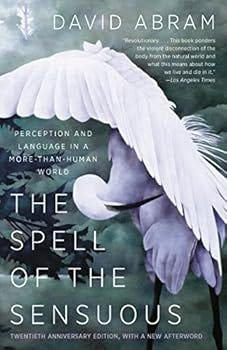
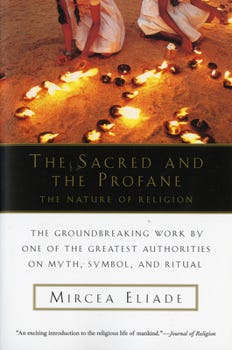
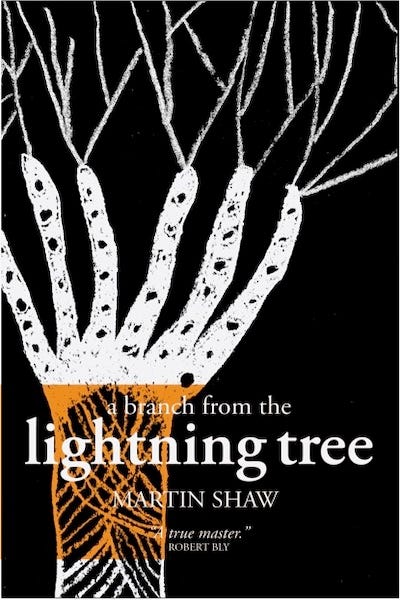

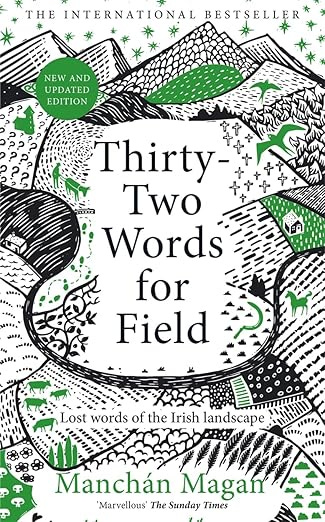
We have many favorite books in common! Thanks for adding a few new ones to my to-read list.